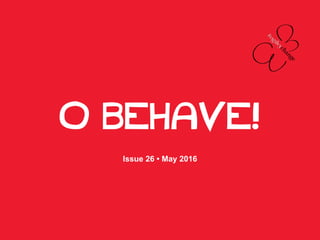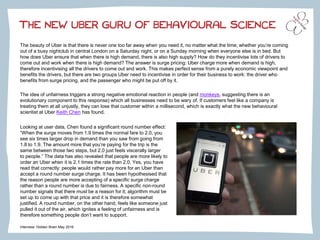1) This document provides a summary of the latest issue of "O Behave!", a newsletter about behavioral science research.
2) It discusses recent studies on friendship perceptions and influence, loss aversion in Donald Trump's campaign, and how describing attitudes as morality-based makes them stronger and less changeable.
3) Brief summaries are also given of new behavioral insights from Uber on surge pricing and "eureka moments" being more likely to provide correct answers to puzzles.









